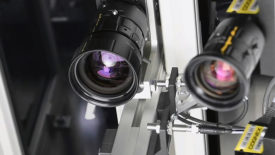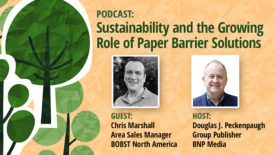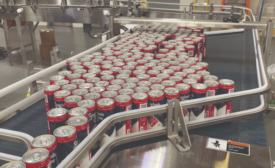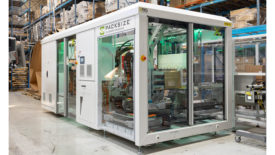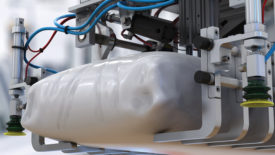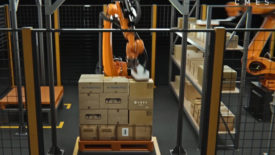Machinery
New technology and advancements in packaging machinery.
Topics
An in-depth look at automation including machinery, HMI, Big Data, IoT, IIoT and more.
Cartoning
Developments with cartons and cartoning machinery.
Case Forming/ Packing/ Sealing
The machinery developments offered for case forming/packing/sealing solutions.
Coding/Marking/Printing
New technology emerging for coding, marking, and printing efficiency.
Components/Parts
Components and parts are the inner workings of packaging machinery that make it function.
Conveyors
A closer look at conveyor technology.
Form-Fill-Seal/Filling & Closing
Machinery developments for FFS, as well as filling and closing.
Inspection/Detection/Vision
All about inspection and detection machinery, as well as vision systems.
Labeling
What’s new with labeling food, beverage, household, medical & pharmaceutical products.
Unitizing/ Palletizing
The machinery developments behind this end-of-line function.
Robotics
Robotic-based applications have a large place in the packaging industry throughout all categories.
Track & Trace/Serialization
Product integrity and authenticity is so important in the pharmaceutical, medical and high-end spirits industries and we show you the latest and greatest.
ARTICLES
Automation
End-of-line Solutions Take Center Stage
Time and again in the course of our reporting on automation and robotics, end-of-line challenges such as palletizing and case forming come to the fore.
June 10, 2024
Inspection/Detection
From Wine to Tortillas: Inspection, Detection, and Vision Systems Play Crucial Role
From properly counting out pharmaceuticals to guaranteeing the proper bottling of wine — and even ensuring that the wine bottles themselves are up to snuff — inspection, detection and vision systems play a myriad crucial roles in CPG packaging.
May 28, 2024
Case Forming/Packing
Companies Make Headlines with Small Footprints, High Speeds
These companies made headlines in 2023 for offering equipment with faster run rates and greater efficiency while taking up less floor space.
February 28, 2024
Unitizing and Palletizing
Piab Strengthens its Grip on Palletizing with the LBG-50
January 25, 2024
Unitizing & Palletizing
Several Key Developments Have Taken Place When it Comes to Palletizing
Progress in Palletizing
January 24, 2024


